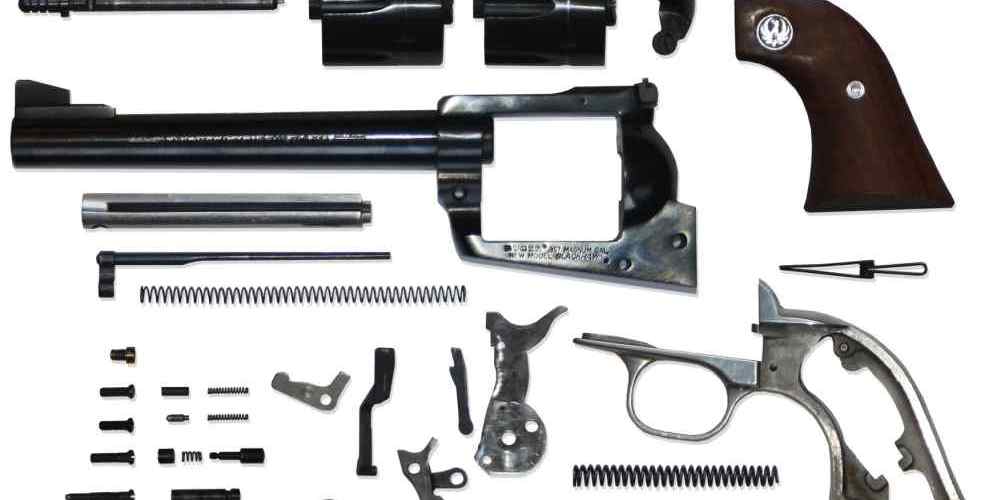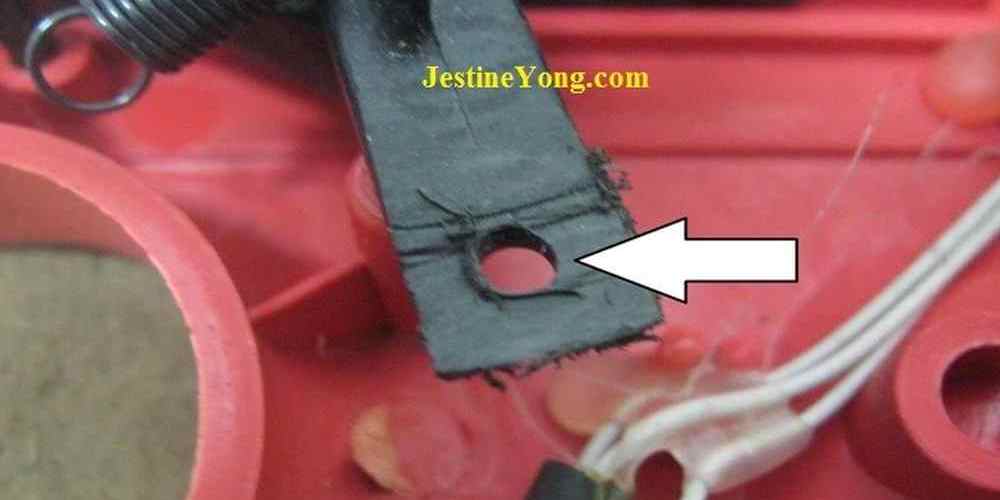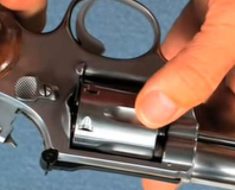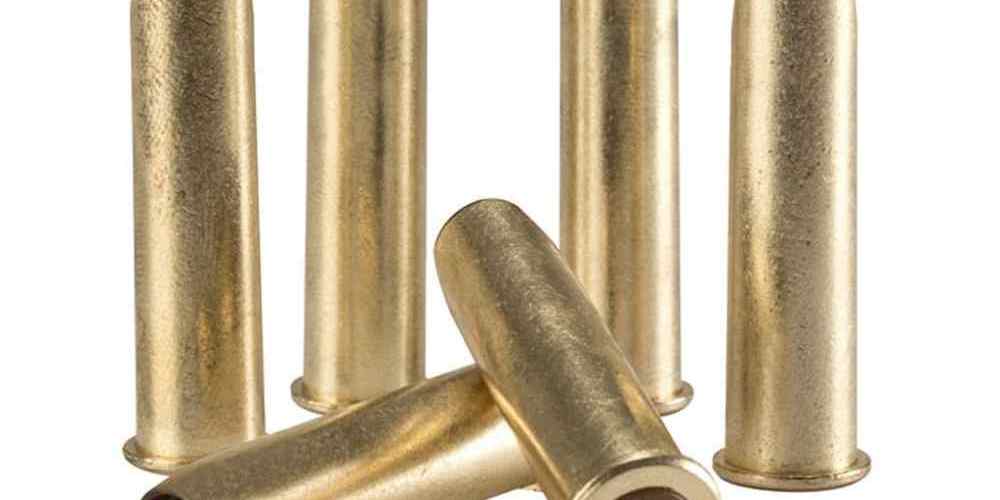“Balancing the Cylinder: Prolonging the Life of Your Revolver”
Proper Cleaning and Maintenance Techniques
Revolver enthusiasts know that proper cleaning and maintenance are essential for keeping their firearms in top condition. Neglecting these tasks can lead to malfunctions, decreased accuracy, and even permanent damage to the gun. One key aspect of revolver maintenance that is often overlooked is the importance of balancing the cylinder.
The cylinder is a critical component of a revolver, as it houses the ammunition and rotates to align each chamber with the barrel. When the cylinder is not properly balanced, it can cause uneven wear on the gun, leading to decreased accuracy and reliability. To ensure that your revolver stays in top condition, it is important to regularly check and adjust the cylinder balance.
One way to check the balance of the cylinder is to inspect the wear patterns on the chambers. Uneven wear can indicate that the cylinder is not rotating smoothly, which can be caused by a variety of factors such as dirt, debris, or improper lubrication. If you notice any signs of uneven wear, it is important to address the issue immediately to prevent further damage to the gun.
To balance the cylinder, start by disassembling the revolver and removing the cylinder from the frame. Inspect the cylinder for any dirt or debris that may be causing it to stick or rotate unevenly. Use a soft brush and gun cleaning solvent to remove any buildup, being careful not to damage the delicate components of the cylinder.
Next, check the alignment of the cylinder with the barrel. The cylinder should rotate smoothly and align each chamber with the barrel without any resistance. If you notice any tight spots or rough areas, it may be necessary to polish the cylinder to ensure that it rotates freely.
Once you have cleaned and inspected the cylinder, it is important to lubricate it properly to ensure smooth operation. Use a high-quality gun oil to lubricate the moving parts of the cylinder, being careful not to overdo it as excess oil can attract dirt and debris. Make sure to rotate the cylinder several times to distribute the oil evenly and ensure that it is properly lubricated.
After lubricating the cylinder, reassemble the revolver and test the balance by dry firing the gun. The cylinder should rotate smoothly and align each chamber with the barrel without any resistance. If you notice any issues, repeat the cleaning and lubrication process until the cylinder operates smoothly.
In addition to regular cleaning and maintenance, it is important to store your revolver properly to prevent damage and ensure longevity. Keep your gun in a cool, dry place away from moisture and extreme temperatures. Store it in a secure gun safe or case to protect it from dust, dirt, and other contaminants.

By following these proper cleaning and maintenance techniques, you can ensure that your revolver stays in top condition for years to come. Balancing the cylinder is a key aspect of revolver longevity that should not be overlooked. Take the time to inspect, clean, and lubricate your revolver regularly to keep it in top condition and enjoy reliable performance every time you pull the trigger.
Choosing the Right Ammunition
Revolver enthusiasts know that proper maintenance is essential to keeping their firearms in top condition. One key aspect of revolver maintenance is choosing the right ammunition. Using the wrong ammunition can cause excessive wear and tear on your revolver, leading to decreased accuracy and potentially dangerous malfunctions. In this article, we will discuss the importance of selecting the correct ammunition for your revolver and provide some tips on how to ensure that you are using the best ammunition for your firearm.
When it comes to choosing ammunition for your revolver, there are a few key factors to consider. The first and most important factor is the caliber of the ammunition. Revolvers come in a variety of calibers, ranging from .22 to .44, and it is crucial to use ammunition that is specifically designed for your revolver’s caliber. Using ammunition that is too large or too small for your revolver can cause excessive pressure in the chamber, leading to potential damage to the firearm.
Another important factor to consider when choosing ammunition for your revolver is the type of bullet. Revolvers can typically shoot either lead or jacketed bullets, and it is essential to use the type of bullet that is recommended for your firearm. Using the wrong type of bullet can cause excessive fouling in the barrel, leading to decreased accuracy and potentially dangerous malfunctions.
In addition to caliber and bullet type, it is also important to consider the weight of the bullet when choosing ammunition for your revolver. The weight of the bullet can affect the recoil of the firearm, as well as the accuracy and velocity of the shot. It is essential to choose ammunition that is the appropriate weight for your revolver to ensure optimal performance.
When selecting ammunition for your revolver, it is also important to consider the quality of the ammunition. Using low-quality or reloaded ammunition can cause malfunctions in your revolver and potentially damage the firearm. It is essential to use high-quality, factory-made ammunition that is specifically designed for your revolver to ensure reliable performance and longevity of your firearm.
To ensure that you are using the best ammunition for your revolver, it is essential to consult the owner’s manual for your firearm. The owner’s manual will provide specific recommendations for the type of ammunition that is best suited for your revolver, as well as any restrictions or limitations on the type of ammunition that can be used. Following the manufacturer’s recommendations will help to ensure that you are using the correct ammunition for your revolver and will help to prolong the life of your firearm.
In conclusion, choosing the right ammunition for your revolver is essential to maintaining the longevity and performance of your firearm. By considering factors such as caliber, bullet type, weight, and quality, you can ensure that you are using the best ammunition for your revolver. Consulting the owner’s manual for your firearm and following the manufacturer’s recommendations will help to ensure that you are using the correct ammunition for your revolver. By taking the time to select the right ammunition for your revolver, you can enjoy reliable performance and accuracy from your firearm for years to come.
Understanding Cylinder Timing and Alignment
Revolver enthusiasts know that proper maintenance is essential to keeping their firearms in top condition. One crucial aspect of revolver maintenance that is often overlooked is cylinder timing and alignment. Understanding how these factors affect the performance and longevity of your revolver can help you keep it in peak operating condition for years to come.
Cylinder timing refers to the precise moment when the cylinder locks into place as the hammer is cocked. If the timing is off, the cylinder may not align properly with the barrel, leading to misfires or other malfunctions. This can be caused by wear and tear on the internal components of the revolver, such as the hand or the cylinder stop. Regular inspection and maintenance of these parts can help ensure that your revolver’s timing remains accurate.
Proper cylinder alignment is also crucial for the overall performance of your revolver. When the cylinder is not aligned with the barrel, the bullet may not travel straight down the bore, leading to decreased accuracy and potentially dangerous situations. Checking the alignment of your revolver’s cylinder is a simple process that can be done at home with the right tools.
To check the alignment of your revolver’s cylinder, first ensure that the firearm is unloaded and the cylinder is open. Next, insert a rod or dowel into the barrel and gently push it through until it reaches the cylinder. If the rod does not pass through the cylinder smoothly and straight, there may be an alignment issue that needs to be addressed. This can be caused by a variety of factors, such as a bent crane or misaligned barrel.
If you suspect that your revolver’s cylinder timing or alignment is off, it is best to consult a professional gunsmith for assistance. Attempting to fix these issues yourself can lead to further damage to your firearm and potentially dangerous situations. A trained gunsmith will have the knowledge and tools necessary to properly diagnose and correct any timing or alignment issues with your revolver.
In addition to regular maintenance and inspection, there are a few simple steps you can take to help ensure that your revolver’s cylinder timing and alignment remain accurate. Avoid dry firing your revolver excessively, as this can cause unnecessary wear on the internal components. Use only high-quality ammunition that is appropriate for your firearm, as low-quality or improperly sized cartridges can cause damage to the cylinder and barrel.
By taking the time to understand and properly maintain your revolver’s cylinder timing and alignment, you can help ensure that your firearm remains in top condition for years to come. Regular inspection, maintenance, and proper use of your revolver will not only improve its performance but also increase its longevity. Remember, a well-maintained revolver is a reliable and safe firearm.
Importance of Regular Inspections
Revolver enthusiasts know that regular maintenance is key to keeping their firearms in top condition. One crucial aspect of revolver maintenance is ensuring that the cylinder is properly balanced. Balancing the cylinder is essential for the longevity and performance of your revolver.
The cylinder is a critical component of a revolver, as it houses the ammunition and rotates to align the chamber with the barrel. When the cylinder is not properly balanced, it can lead to a variety of issues, including misfires, jams, and decreased accuracy. To prevent these problems, it is important to regularly inspect and maintain the cylinder of your revolver.
One of the first steps in balancing the cylinder is to check for any signs of wear or damage. Inspect the cylinder for any cracks, dents, or other imperfections that could affect its performance. Pay close attention to the locking mechanism and ensure that it is functioning properly. If you notice any issues, it is important to address them immediately to prevent further damage.
Next, check the alignment of the cylinder with the barrel. The cylinder should rotate smoothly and align perfectly with the barrel when the revolver is cocked. If you notice any misalignment or resistance, it may indicate that the cylinder is not properly balanced. This can be caused by a variety of factors, including worn or damaged parts, debris buildup, or improper maintenance.
To balance the cylinder, start by cleaning and lubricating the moving parts. Use a high-quality gun oil to lubricate the cylinder, ensuring that it rotates smoothly and without resistance. Remove any debris or buildup from the cylinder and locking mechanism to prevent jams and misfires. Regular cleaning and lubrication will help maintain the balance of the cylinder and ensure optimal performance.
In addition to cleaning and lubricating, it is important to regularly inspect the cylinder for proper timing. The timing of the cylinder refers to the alignment of the chamber with the barrel when the revolver is fired. If the timing is off, it can lead to misfires and decreased accuracy. To check the timing, dry fire the revolver and observe the alignment of the cylinder with the barrel. If you notice any issues, it may be necessary to adjust or replace the timing components.
Balancing the cylinder is not only important for the performance of your revolver but also for its longevity. A properly balanced cylinder will help prevent wear and damage to the moving parts, ensuring that your revolver functions smoothly and reliably for years to come. Regular inspections and maintenance are key to keeping your revolver in top condition and maximizing its lifespan.
In conclusion, balancing the cylinder is a crucial aspect of revolver maintenance that should not be overlooked. By regularly inspecting and maintaining the cylinder, you can ensure that your revolver performs at its best and lasts for years to come. Remember to clean, lubricate, and check the alignment and timing of the cylinder to keep your revolver in top condition. With proper care and maintenance, your revolver will continue to be a reliable and accurate firearm for years to come.
Tips for Extending the Lifespan of Your Revolver
Revolver enthusiasts know that proper maintenance is key to ensuring the longevity of their favorite firearms. One often overlooked aspect of revolver care is the importance of balancing the cylinder. Balancing the cylinder refers to evenly distributing the wear and tear on the revolver’s chambers, which can help prevent premature wear and extend the lifespan of the gun.
When a revolver is fired, the force of the explosion pushes the bullet out of the chamber and into the barrel. This force also causes the cylinder to rotate, aligning the next chamber with the barrel for the next shot. Over time, this repeated rotation can cause uneven wear on the chambers, leading to potential issues such as misalignment, cylinder binding, and decreased accuracy.
To prevent these issues, it is important to balance the cylinder by evenly distributing the wear on all the chambers. One way to do this is by regularly rotating the chambers when loading and unloading the revolver. By rotating the chambers in a clockwise or counterclockwise direction each time you load or unload the gun, you can ensure that the wear is evenly distributed across all the chambers.
Another way to balance the cylinder is by practicing proper shooting techniques. When firing a revolver, it is important to use a consistent grip and trigger pull to minimize the stress on the cylinder. By maintaining a steady grip and applying even pressure on the trigger, you can help prevent uneven wear on the chambers.
In addition to balancing the cylinder, there are other steps you can take to extend the lifespan of your revolver. Regular cleaning and lubrication are essential to prevent corrosion and keep the gun functioning smoothly. Make sure to clean the chambers, barrel, and other moving parts of the revolver after each use, and apply a light coat of gun oil to prevent rust and friction.
It is also important to store your revolver properly to protect it from damage. Keep your gun in a secure, dry location away from moisture and extreme temperatures. Invest in a quality gun case or safe to protect your revolver from dust, dirt, and other contaminants that can cause damage over time.
Regular maintenance and care are essential for keeping your revolver in top condition. By balancing the cylinder and following these tips for extending the lifespan of your revolver, you can enjoy your favorite firearm for years to come. Remember, a well-maintained revolver is a reliable and accurate tool that will serve you well for many shooting sessions to come.






